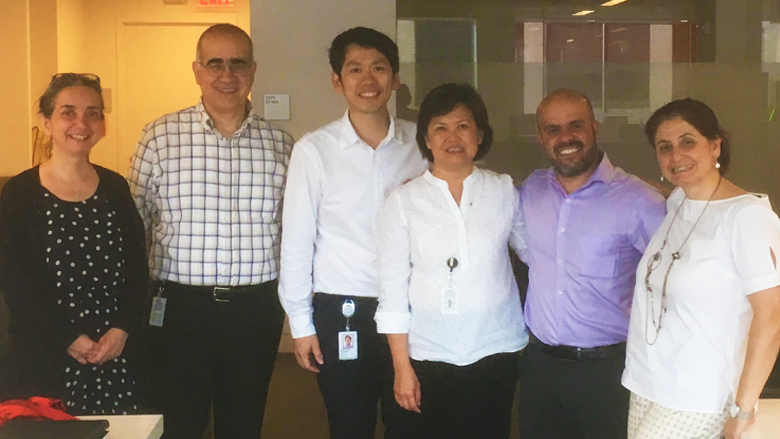
I started hooking up my laptop to the projector, willing my nervous hands to obey. It was a small meeting room by World Bank standards, an intimate setting for the most important event in my summer in DC. With the seven week secondment period coming to a close I was going to present different borrowing strategies for Thailand to a roomful of people who were experts in public debt management field. Not only were they leading World Bank advisors but became my not-so-easy-to-impress mentors over the summer.
A secondment assignment, where a member of one organization spends time to work in another organization for a temporary period, was a great opportunity for deepening my knowledge. Coming from the Thailand Public Debt Management Office (PDMO), my secondment was with the World Bank Treasury, Public Debt Management Advisory and the Equitable Growth, Finance, and Institutions (EFI) groups.
Thailand is doing well in managing public debt. The public debt remains below 50 % of GDP (as of May 2019), and the risk is very low. The foreign exchange exposure, measured by a share of unhedged external debt to public debt, is kept below 1%. The average time to maturity, a refinancing risk indicator, is around 11 years. At the PDMO, we always want to build further capacity and support a learning culture, hence the emphasis on continuous training.
My particular assignment at the World Bank was to master Cost-Risk modeling. One of the main objectives of a debt manager is to borrow at the lowest possible cost with acceptable risk. Cost-Risk modelling can help determine the medium-term debt strategy (a three to five year plan). I started my assignment by reviewing the literature, the guidance notes to get the idea about concepts and objectives for developing a debt management strategy. After getting familiar with the concepts, I started using Bloomberg, a financial software, to gather data on financial variables such as interest rates and exchange rates, to be used as variables for the Cost-Risk model. Subsequently, I started using the Excel based modeling tool to help determine the medium-term debt strategy. The tool works on an input-output principle. Inputs: data from Bloomberg for different debt scenarios; outputs – graphics and data for different borrowing strategies allowing the debt manager to compare each strategy.
Although the tool itself seems relatively easy to use, it is the theory and the assumptions that go behind the tool that make the real difference. Therefore, the debt manager has to have a sound understanding of the policy implications of different scenarios, and cost-risk tolerance of the government. Therefore, a debt manager must evaluate each strategy carefully before making a final decision on the choice of strategy to implement.
Mastering the tool was very important for myself and my department. When I go back to PDMO in Thailand, I will apply the learnings to my unit, the risk management group. I have improved my skills in using Bloomberg to calculate the swap rates, forward interest rates, and exchange rates, to help my fellow debt managers. As for the use of the Cost-Risk model, PDMO generally evaluates the funding needs and comes up with the borrowing plan at the beginning of each fiscal year. Therefore, I can use the Cost-Risk model to see which strategy could lead to the desired benchmarks and to present the trade-off between each borrowing strategy to help PDMO decide.
My presentation to my managers and my colleagues at the World Bank went smoothly. I decided to run a model with a riskier strategy than current strategy that PDMO is implementing. Overall, the model showed that PDMO could lower cost of borrowing by issuing more short-term debt. However, the risk will be higher compared to the current strategy because those short-term rates are more volatile than long-term rates. Moreover, I didn’t just present the results of the model but was able to explain the assumptions and logic behind the numbers.

As I’m looking out the window of the plane, reflecting on the past two months, and asking the question: what was the most important event of the summer 2019? My presentation at the end? Visiting the wonderful museums and landmarks of Washington DC? Although each one of them stands out on their own, the backdrop behind all of them was coming closer to solving the puzzle of cost and risk for Thailand. I’m now armed with one more tool in my toolbox.
